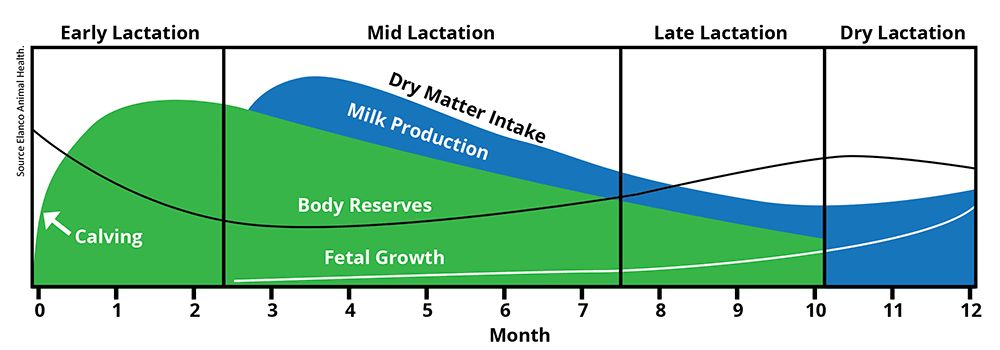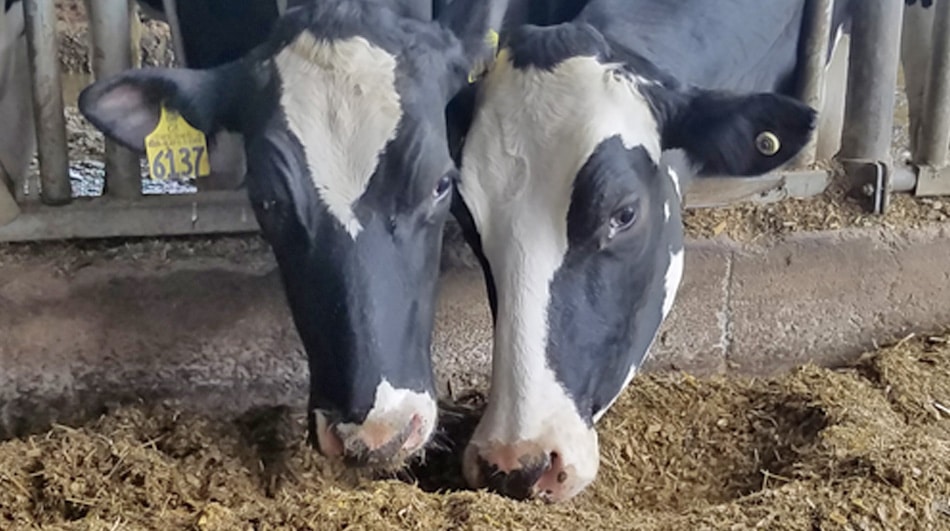Raw Milk String Sampling to Help Increase Feed Ration Efficiency
Raw milk string sampling has become increasingly important. This post examines the potential value of string sampling of milk to help nutritionists fine-tune ruminant formulations to provide better information and manage costs.
Current feed market prices have milk producers looking for every possible way to manage costs, making the role of ruminant nutritionists increasingly important. We scrutinize every decision and analyze all ingredients and their return on investment with milk cows and heifers to help our clients stay in business.
One area receiving increasing attention is evaluating milk by production status to increase the efficiency of ruminant formulations.
Three types of feed rations
Most of our clients have at least three different feed rations for milk cows, even though each farm has a slightly different management strategy.
The first ration, or fresh ration, is designed to get cows up and running with lactation after giving birth. This ration is formulated to facilitate rumen health and assist the cows in transitioning from being dry back into lactation. Most clients utilize a fresh pen or pens to help manage these early lactation cows, whose milk goes into the bulk tank.
The second ration is commonly a high lactation ration. This ration is usually fed to lactating cows from approximately 40 days into producing milk up to around 200 days in milk production. This ration is formulated to provide adequate nutrients for these cows as they reach peak milk production and for a period beyond.
The goal is to make certain that these cows are getting everything they need at the feed bunk to make the most milk possible. This ration not only has to supply nutrition for lactation but must also minimize body condition losses and prevent the cow from having to mobilize too much of her energy reserves that she accumulated in the dry pen.

These are typically the pens that get most of our attention as nutritionists because there is so much going on with these cows during this time frame. This is also the time when these cows must return to reproductive cyclicity to breed and have a subsequent lactation.
If, during this period, the cow has to mobilize much of her energy stores to meet her nutritional needs, then her return to cyclicity will be delayed, and she will be late getting pregnant or may miss breeding altogether.
I spend a lot of time in these pens with clients so that we can make needed adjustments as soon as possible. The evaluation of body condition score is very subjective and highly variable between individuals, but it is currently the most available tool.
I also spend a lot of time evaluating intakes and looking at manure for clues or indicators of how well our ration is meeting the needs of the cow. The milk from these cows also ends up in the bulk tank.
The third ration seems to have many different names depending on the client. This ration provides adequate nutrition for the days further into milk production. We have multiple objectives for the ration with these cows.
They are either bred or designated as do-not-breed (DNB) at this time and are in the process of finishing out their lactation and preparing to dry off. We do not want to give up milking during this time, but we also do not want to waste expensive feed when the cow is naturally producing less milk. The milk from these late-lactation cows gets mixed with all the other cows’ milk in a bulk tank.
We evaluate cow milk production and components based on the feedback from this bulk tank. We know the number of pounds shipped and the number of cows milked, so we can do some simple math to calculate the average pounds produced per cow. We then can get feedback from the milk buyer regarding fat, protein, milk urea nitrogen (MUN), and somatic cell counts (SCC). This is all information based on the average of the mixed milk from all groups, and I believe we can do better.
Using string sampling to fine-tune rations
String sampling of milk would allow nutritionists the ability to fine-tune the individual rations. If we had data on the components of fresh, high, and late lactation rations as the milk came through the parlor, we could adjust those individual rations based on the milk from the actual cows on that ration.
Most of us have used a microscope in biology or chemistry class. There is a large knob that makes big focus movements, and then there is a small knob that makes very slow and precise adjustments. I believe that the ability to string sample milk from groups of cows on specialized rations would allow nutritionists the ability to use the small knob to fine-tune these rations even further to accomplish the goals of each ration.
Knowing the component percentages within each ration in real time would give us greater insight into the ability of the ration components to meet the cows’ needs. For example, if the collected string sample revealed lower than desired protein, we could adjust the ration to provide those cows more resources to add protein to the milk. The same could be said for the fat content.
If SCC revealed that certain groups of cows had higher counts, the dairyman could investigate and potentially prevent a problem of contaminating the full bulk tank.
Raw milk string sampling would provide another tool in our belt to increase the efficiency of individual rations based on the milk from those specific cows, which would be a much better measurement than an average from the bulk tank.
It is impossible to manage what we do not measure. The more precise the measure, the more precise the management. Precision on the dairy will always have a positive effect on the bottom line.
Here are additional resources on our website that will help you learn more about string sampling.
- Representative Sampling Solutions for Dairy Farms
- String Sampling RE-Imagined for Milk Quality and Much More…
- How Standard Plate Count Affects Raw Milk Quality
- Field Validation Study
- Printable Application Site Schematics
- Sampling Solutions Infographic
- Training Videos
Have questions about string or aseptic and representative liquid sampling? Ask our experts for a free consultation or call us at 651-501-2337. We love troubleshooting issues and using analytics to solve complex problems to provide customer-focused insight.




